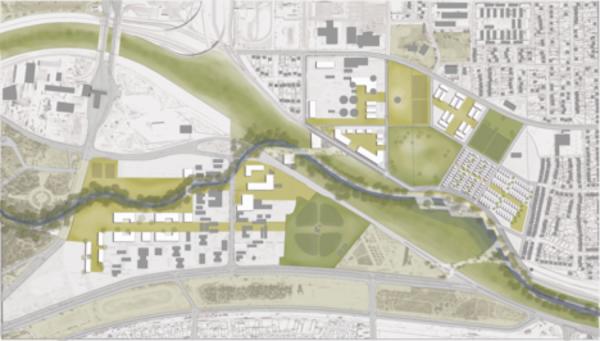UTSOA Students Propose New Solutions for U.S./Mexico Border

Borders can be thought of as geographic entities, political boundaries, or other spatial limits. The consequences of borders can be explored through many lenses. They not only define physical barriers but also have psychological and environmental impacts.
An analysis of the current border system makes plain that there are three major industries that lead border discourses, and to a large extent, the entire border landscape. First is the globalization industry, which moves $500 billion in goods between US and Mexico every year, with a goal to have a border that facilitates ongoing exchange. The second is the labor industry, which employs millions of Hispanic workers all over the U.S. (legally or not) and is interested in a border that is not tightly closed, but also not completely open. The third is the military industry, which some believe keeps the border system dysfunctional so that both governments can justify spending billions in equipment, personnel, and infrastructure for militarized control.
Architecture, with its power to articulate visions of a better future, has a responsibility to weigh in on such issues and be part of their solution. Associate Professor Fernando Lara, a specialist in Latin America, enlisted the help of his students to think through the issue of immigration. He tasked them with devising safe, sustainable, and equitable design solutions for a border between Mexico and the U.S.
Lara’s studio had one basic premise: Imagine a U.S./Mexico border in which people are allowed to move freely, but one in which travelers and their possessions are closely inspected in order to maintain security. Students spent several weeks considering this directive and developed designs aimed at eroding the bases of the three main industries described above toward a more humane and functional border. Thirteen students in the UT Austin studio are working in parallel to two classes at Universidad Autonoma Nuevo Leon in Monterrey, Mexico.
Projects currently under development include:
- A high-speed rail connection that stitches the border together from Tijuana/San Diego to Matamoros/Brownsville
- A pedestrian bridge with full airport-like security for people and cars between Laredo and Nuevo Laredo
- A full integration of two small cities with checkpoints in the outer perimeter
- A binational campus for environmental education
- A sequence of catwalks and observation towers that allow for the appropriation of Border Field State Park at the mouth of the Tijuana river

